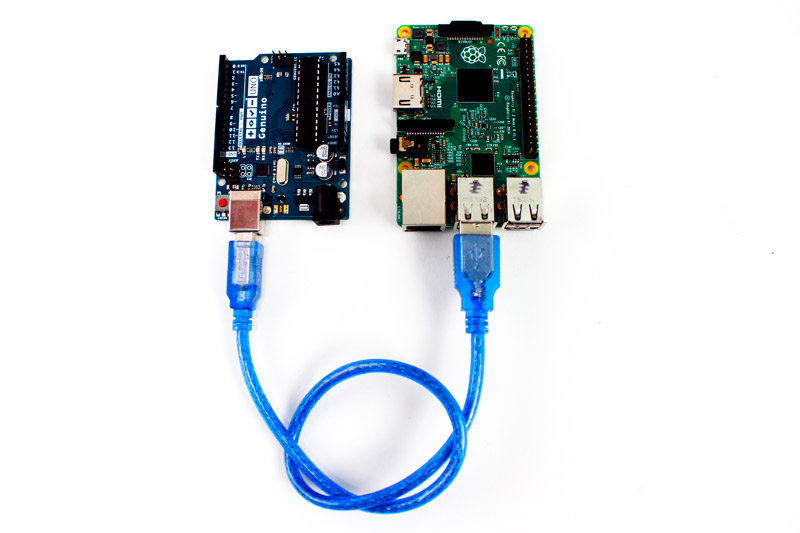


- #Test serial connection on raspberry pi install
- #Test serial connection on raspberry pi update
- #Test serial connection on raspberry pi software
- #Test serial connection on raspberry pi download
#Test serial connection on raspberry pi download
If I wait (2 minutes) before entering that menu, I then get the download list as the connection is reestablished. That’s causing an issue with my flakey network gear because it means it’s not downloading the available OSs and the Choose OS list for me is blank except for two items. It looks like when the Raspberry Pi completes the download for the Firmware based imager, the connection is reset between the firmware downloader and the imager. Once it’s up it’s fine until the connection resets from a restart or a shutdown. Even on my desktop computer the connection takes a LONG TIME to bring up. Only issue I’m having is not caused by your software, but by my flaky ISP issued Ethernet MoCA / WiFi Extender that has 2 GbE ports on it. If you boot your Raspberry Pi without an SD Card in the slot, or with a blank SD Card, and if you have a keyboard connected, you’ll now see something a bit different. However, the Raspberry Pi now also looks for a connected keyboard. If you want to insert your original SD card (the one you were using before all this started) your Raspberry Pi should boot seamlessly back into the operating system as normal. After a few seconds, you’ll see a diagnostics display on the screen showing you what it’s doing.
#Test serial connection on raspberry pi software
It will keep going round in a loop until it finds some software to use. It first looks for an SD card, then a USB stick, and so on. When a Raspberry Pi is switched on, the bootloader searches for software to load. Now that you have updated the bootloader everything should still work as before.
#Test serial connection on raspberry pi update
Now remove your bootloader update SD card and turn your board off and back on again. If you ever want to restore your bootloader back to the “Release” version you can follow these steps again, selecting the top “Bootloader” option instead of the “Beta Test Bootloader” option. The board LED will blink regularly, and the screen will go green to indicate that flashing the new beta bootloader was successful. Insert the card you just flashed with the Imager application into the Raspberry Pi and power it back on. When the SD card has finished burning you should power off your Raspberry Pi and remove the existing SD card and put it somewhere safe. Selecting the boot orderĪfterwards, select your media and follow the normal instructions to burn the updated bootloader to your SD Card. Unless you have a reason to do otherwise, you should probably select “SD Card Boot”. All of the options are the same but will have a different boot order. Select “Misc utility images”, then select “Beta Test Bootloader”. In the Imager application, click on the “Choose OS” button and scroll down the “Operating System” list in the pop-up window. You should be aware that the SD card you’re using to update your Raspberry Pi’s bootloader will be wiped of any existing data, so you shouldn’t use the SD card you are currently using with your Raspberry Pi. You’ll need a spare blank SD card and, if you’re using a Raspberry Pi or another computer that doesn’t have an SD card slot, a USB to SD card dongle. The easiest way to update the bootloader on your Raspberry Pi 4 or 400 is by using Raspberry Pi Imager, either running on your Raspberry Pi or on another computer, to copy the required software onto an SD card. However, once the beta period has ended, we’ll eventually ship Raspberry Pi boards with the new network bootloader installed directly from the factory and this step won’t be necessary anymore. Updating the bootloader will be necessary for existing boards already in circulation.
#Test serial connection on raspberry pi install
If you want to try out the network installer you’ll first have to install a beta version of the bootloader. The Raspberry Pi Imager application, which will run in memory on your Raspberry Pi, can then be used to flash the operating system onto a blank SD Card or USB disk, just like normal. The new Network Install feature can be used to start the Raspberry Pi Imager application directly on a Raspberry Pi 4, or a Raspberry Pi 400, by downloading it from the internet using an Ethernet cable. There is now a beta version of the Raspberry Pi bootloader that implements network installation, and we’d like your help to test it.

It’s the classic chicken and egg problem, and we’ve just solved it. But how do you get the operating system onto an SD card if you don’t have another computer in the first place? Until today you’ve always needed to use another computer to run Raspberry Pi Imager, or to run something similar, to let you flash your operating system onto an SD card when you get a new Raspberry Pi.


 0 kommentar(er)
0 kommentar(er)
